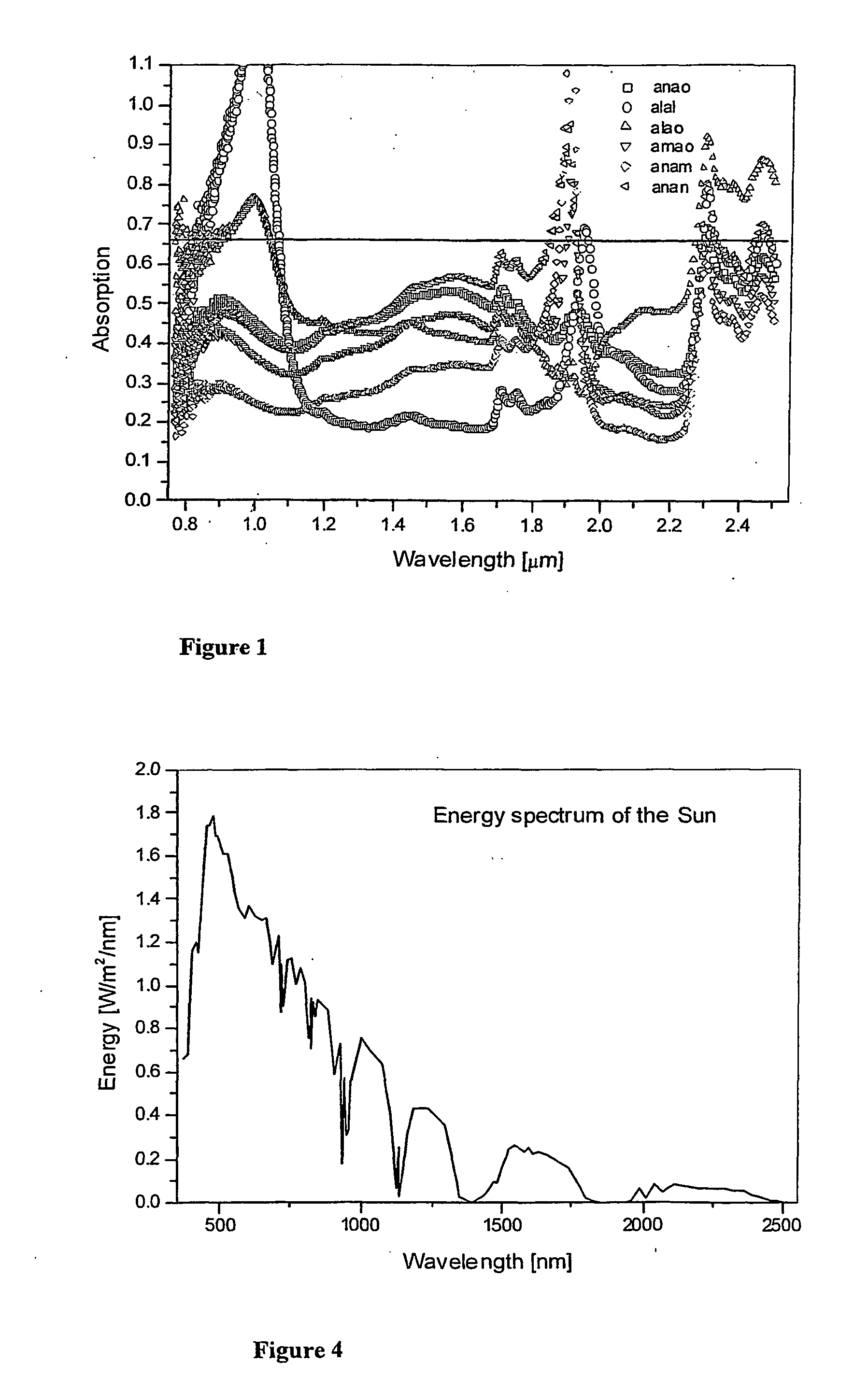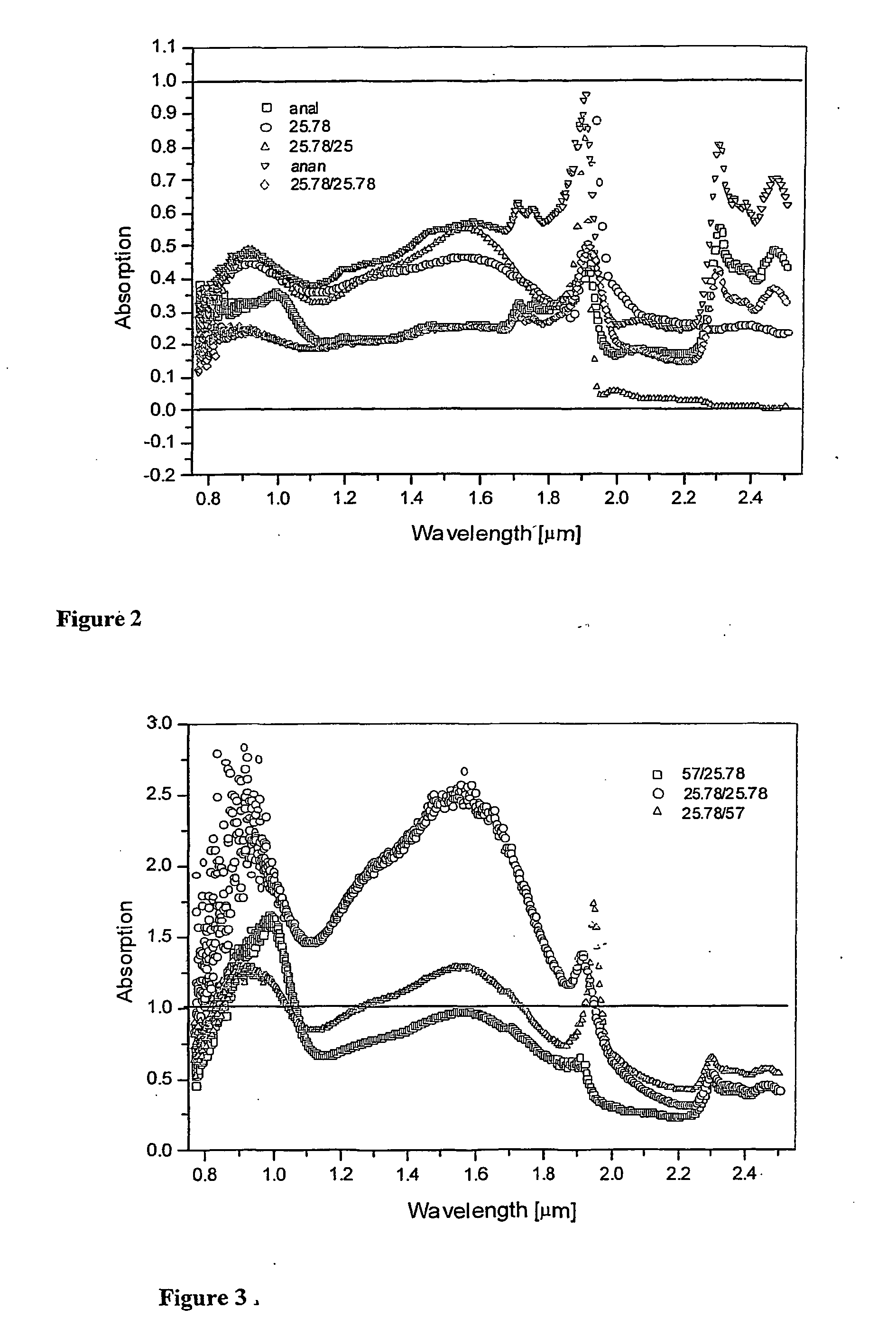Glazing laminates
a technology of laminates and laminates, applied in the field of glazing laminates, can solve the problems of unsuitable dyes that are barely compatible with the polymer matrices, uneven colour and torn panels, and blotchy panels, so as to reduce heat build-up and minimize heat transmission to the interior
- Summary
- Abstract
- Description
- Claims
- Application Information
AI Technical Summary
Benefits of technology
Problems solved by technology
Method used
Image
Examples
example 1
[0050] Methanol was tested for the dissolution of the dyes and of the PVB. BN18 polymer (Wacker-Chemie, PIOLOFORM) was used.
[0051] Initally 2 mg dye / 1 g of PVB mixture was produced and dissolved in ethanol forming a ˜40% solution with respect to the resin. This solution was diluted by methanol to have an overall concentration of 20% of resin. The glass plates were cast in consecutive steps by this solution. During the drying process the layer turned to be turbulent then it cleared. The next consecutive layer was cast in this stage. A dye density of 0.010-0.026 g / m2 covered the individual slides. Additional layers of PVB were cast to have an expected layer thickness of 0.05 mm after the heat treatment. Following by an overnight drying the slides were heat treated at 135° C. for 5-10 min. Two slides were pressed together to have a homogeneous and transparent layer.
[0052] Four dyes were tested. Epolite 125-(AN), Epolite 178 (AM), Epoline III-57 (AL) and Spectra IR 920 (AO). The combi...
example 2
[0062] Two new dyes were obtained from Epolin Inc. for the purpose of producing blue and grey laminates. The dyes were Sole Blue 33 and Violet B. Epolin give the ratio of colour dye with respect to IR dye of 0.1-0.15 w / w.
[0063] Types of PVB (BN18) and glass used were as previously reported. Methods for preparation were used as previously developed.
[0064] Results
[0065] Sole Blue 33 dissolved well in methanol (5 mg / 10 ml) but Violet B was soluble only up to 1 mg / 10 ml.
[0066] Initial experiments on a small scale were carried out to match the colour to blue or gray from that of the IR dye (i.e. green-yellow). Levels of the new dye of 0.1, 0.3 and 1 w / w dye per IR dye were tested. 4 mg / g IR dye with respect to PVB was used dissolved in 10 ml MeOH / g of PVB.
[0067] Sole Blue 33 dissolved properly at each concentration. However, it did not produce a good colour match—it formed various green colours. Violet B did not dissolve perfectly at the highest concentration—it also produced only a...
PUM
| Property | Measurement | Unit |
|---|---|---|
| wavelengths | aaaaa | aaaaa |
| wavelengths | aaaaa | aaaaa |
| wavelengths | aaaaa | aaaaa |
Abstract
Description
Claims
Application Information
 Login to View More
Login to View More - R&D
- Intellectual Property
- Life Sciences
- Materials
- Tech Scout
- Unparalleled Data Quality
- Higher Quality Content
- 60% Fewer Hallucinations
Browse by: Latest US Patents, China's latest patents, Technical Efficacy Thesaurus, Application Domain, Technology Topic, Popular Technical Reports.
© 2025 PatSnap. All rights reserved.Legal|Privacy policy|Modern Slavery Act Transparency Statement|Sitemap|About US| Contact US: help@patsnap.com



